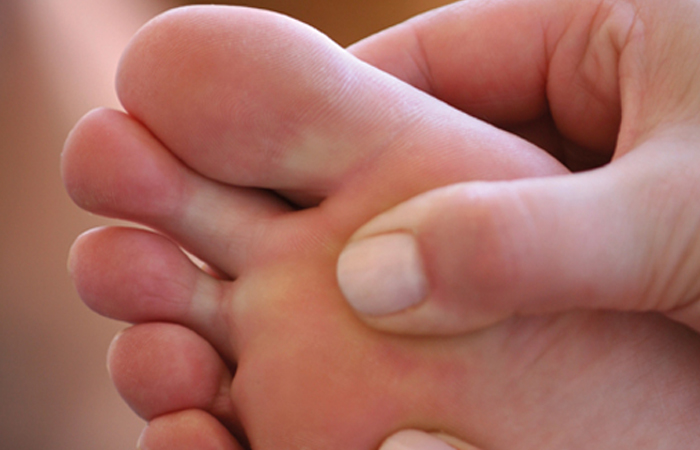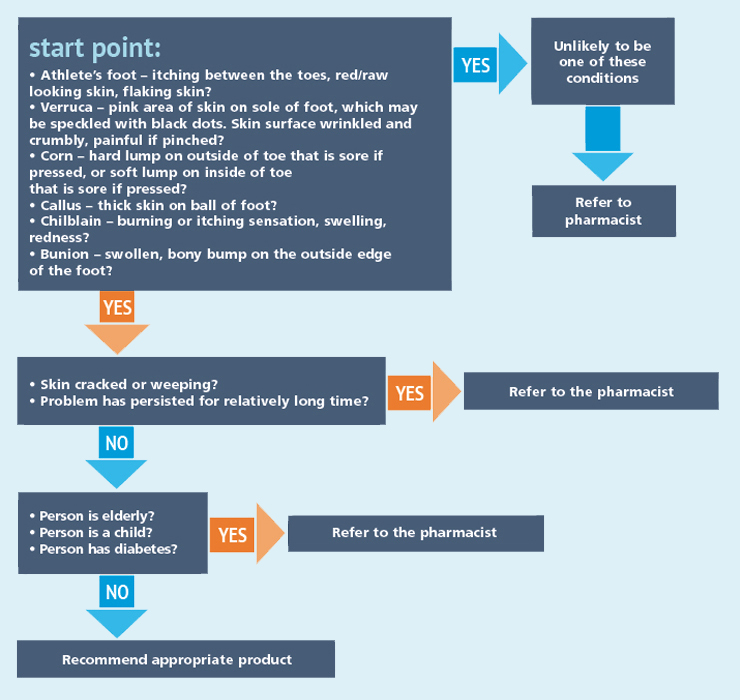10 minute clinic: foot and leg care
In OTC
Follow this topic
Bookmark
Record learning outcomes
This handy 10-minute clinic is designed to act as a quick reference guide that will help you when advising customers in the foot and leg care category. The flowchart below will lead you through the decision-making process to help you respond to customer queries

At a glance

Whenever you talk to any customer, remember WWHAM:
Who is the medicine for?
What are the symptoms?
How long have the symptoms been present?
What Action has already been taken?
Are they taking any other Medication for this or any other reason?
You don’t have to ask these questions in order, and a customer might give you some of this information without you asking. As long as you get them into the conversation, you should be able to find out the information you need in order to make a recommendation.
The golden rule to remember is: if in doubt, refer to your pharmacist. Don’t be embarrassed to ask for their advice as they have a lot of information about products and symptoms to hand that you may not be aware of.
Self care tips
• Corns/calluses – identify the cause and avoid it (e.g. buy wider-fitting shoes)
• Verrucas – don’t walk barefoot in wet areas; don’t share towels; wear verruca socks in swimming pools and/or flip-flops in changing rooms and showers
• Chilblains – keep warm, but warm up slowly
• Athlete’s foot – wash feet regularly and dry them well afterwards; treat shoe insoles and socks with an antifungal agent; wear cotton socks; allow feet to ‘breathe’ as much as possible; protect feet in public swimming pools and showers by wearing flip-flops
• People with diabetes should visit a chiropodist regularly.
When to refer to the pharmacist
- If the customer is elderly, a child or has diabetes
- If athlete’s foot has persisted for more than a month, despite treatment
- If any condition involves cracked or weeping skin.
Signposting
For further information about foot and leg care, see:
